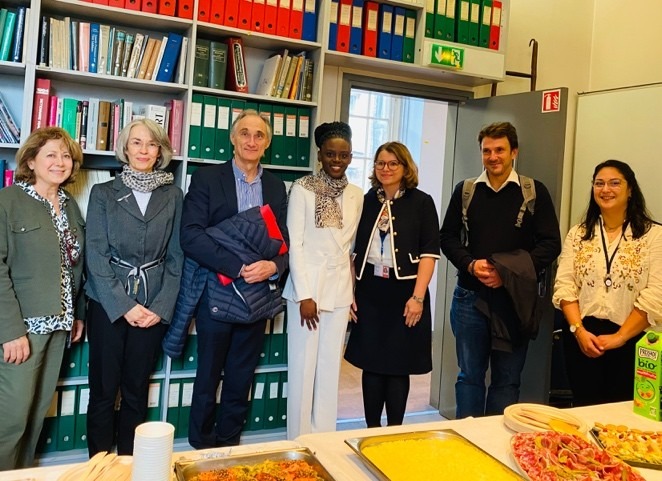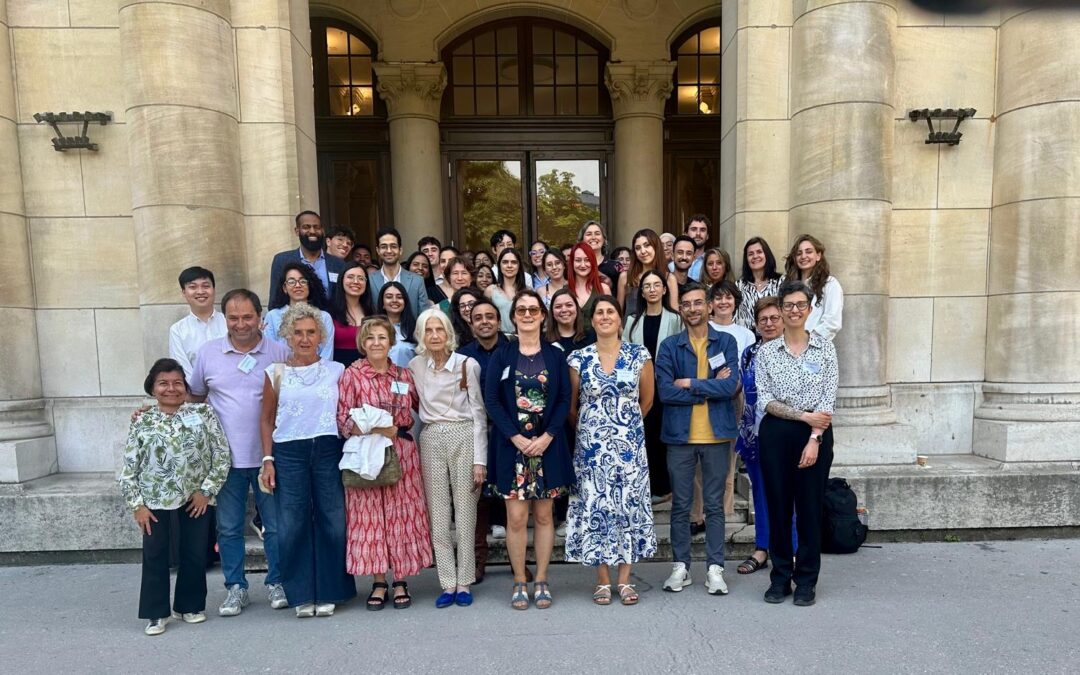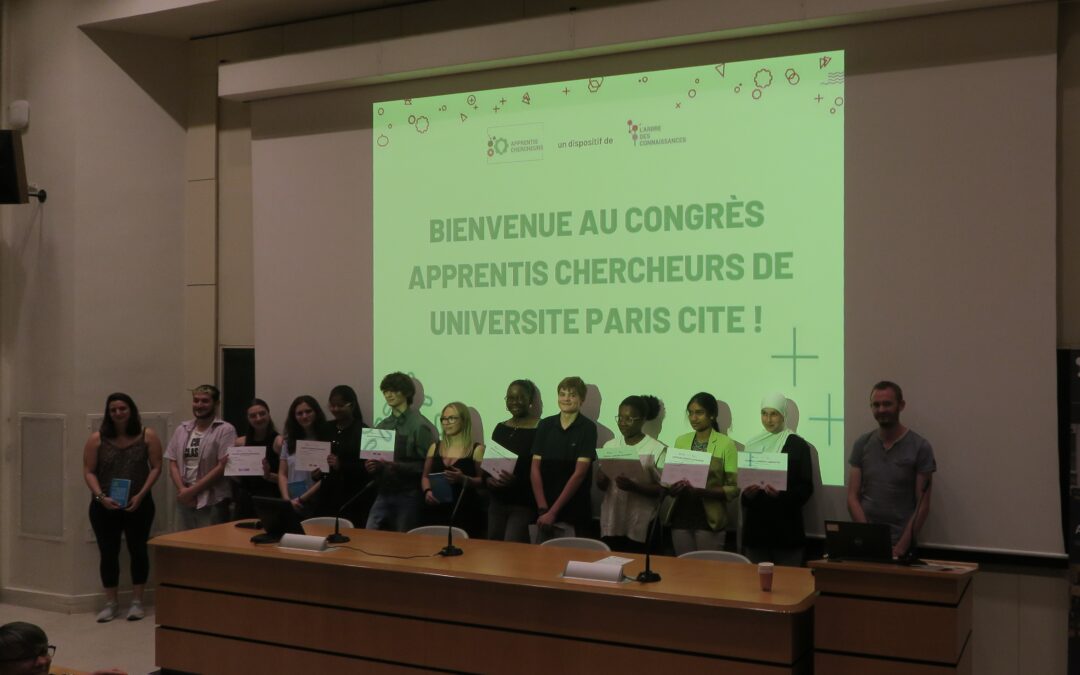_____________________
National funding
ANR
MethAmAbs: The MethAmAbs project aims at implementing an innovative analytical strategy allowing the simultaneous quantification and structural characterization of therapeutic monoclonal antibodies in biological matrices. This methodology is based on the coupling of capillary electrophoresis and high sensitivity tandem mass spectrometry (CE-MS/MS). The CE-MS/MS approach will be applied to the study of serum samples from patients treated for chronic inflammatory bowel diseases such as Crohn’s disease. The information provided by the CE-MS/MS analysis will reveal fundamental aspects concerning the evolution of mAbs after administration to the patient.
Coordinator: Mr Yannis François (University of Strasbourg)
UTCBS scientific leader: Rabah Gahoual
Nanothermometry :This project aims at measuring the local temperature at the contact of nanoparticles heated by activation under alternating magnetic field by luminescent particles. The particles will be co-localized in order to adjust the distance between the heat source and the measurement point in order to study the temperature gradients at the nanometer scale. These measurements will be performed under the in vitro conditions of therapeutic hyperthermia and operando of heterogeneous magnetic induction catalysis in solution. The nanothermometers will be selected to fit the temperature (20-300°C) and emission (NIR II) range but also to meet the stability (thermal or chemical) and toxicity constraints of the two application fields.
Coordinator :Mrs Corinne Chaneac (Chemistry of Condensed Matter of Paris)
UTCBS scientific leader :Johanne Seguin
Fibrother :The objective of my project is to develop new siRNA nanovectors for the therapy of hepatic fibrosis. Hepatic fibrosis can evolve into cirrhosis or hepatocarcinoma and has no standard treatment to date. It is a major consequence of chronic liver diseases such as hepatitis, alcoholism or metabolic disorders such as non-alcoholic fatty liver disease (NASH). Given the increasing prevalence of obesity in the population, NASH will become a global public health problem and new therapeutic strategies are needed. In this context, I propose to develop new siRNA nanovectors targeting simultaneously several fibrosis activation pathways. The efficacy of these nanovectors will be studied on a mouse model of metabolic liver fibrosis, close to human pathology. New strategies for monitoring fibrosis will be developed: study of the miRNA signature and imaging to, on the one hand, finely quantify fibrosis and, on the other hand, to monitor the evolution of fibrosis in a steatohepatitis context in a non-invasive manner. This ambitious project, at the interface between chemistry, biology and medicine, will have to meet major scientific and technological challenges and will make it possible to identify new therapeutic targets for hepatic fibrosis. Thus, obtaining a Young Researcher grant from the ANR would help me to build my team to answer these questions, within the Chemical and Biological Technologies for Health Unit of the University Paris Descartes.
Coordinator : Mrs Céline Hoffmann (Unit of Chemical and Biological Technologies for Health
UTCBS scientific manager : Céline Hoffmann
Stric-on :The main objective of our project is to use nanoparticle-based systems that carry active DNase I and that preferentially accumulate on the clot by equipping them with ligands that recognize the fibrin present within the clot. In order to develop new nanovectors with these characteristics, we propose the use of cerium oxide nanoparticles (CeO2 or nanoceria) on which DNase I will be grafted. Cerium oxide nanocrystals are non-stoichiometric particles with tri- and tetravalent Ce3 + and Ce4 + cations on their surface. The coexistence of two oxidation states gives these particles remarkable catalytic properties, their activity being similar to that of catalase, superoxide dismutase or peroxidase enzymes. It has been demonstrated that catalytic processes involving nanoceria smaller than 10 nm lead to the decomposition of reactive oxygen species. In upstream research, nanoceria have been used as therapeutic agents in the treatment of oxidative stress associated with pathologies such as cardiomyopathy, sepsis, multiple sclerosis. During a stroke, oxidative stress occurs and contributes to neuronal and vascular lesions; the latter are particularly deleterious for patients because they lead to intracerebral hemorrhages. Moreover, during recanalization, the blood supply of oxygen can aggravate this phenomenon. CNPs with their antioxidant properties can therefore protect the vessels during recanalization and reduce the occurrence of cerebral hemorrhages. Our approach is complementary to the fibrinolysis obtained by r-tPA by focusing on NETs and oxidative stress using bifunctional cerium oxide nanoparticles carrying DNase I activity.
Coordinator : Mrs Isabelle Margaill IThEM : Innovations Thérapeutiques en Hémostase
Scientific leader UTCBS: Nathalie Mignet
PEP-PARK: We propose an integrated and innovative program for the preclinical demonstration of the efficacy of LRRK2:PPP1CA interfering peptides as Parkinson’s disease (PD) therapy. Having already reported a first interfering peptide effectively targeting the interaction between LRRK2 and its regulating phosphatase PPP1CA, we will optimize our existing peptides as well as design new interfering peptides disrupting this complex. We will validate these interfering peptides for their biological activity and therapeutic potential using an integrated approach combining in silico modelling, biophysics, chemistry, structural biology with experiments in vitro, in cellulo and in vivo in appropriate invertebrate and vertebrate models.
Partner: Angelita Rebollo
ENDOMET: Appropriate energy homeostasis results from the exquisite balance between energy intake and energy expenditure. In that regard, several determinant of feeding behavior are extensively studied and encompass homeostatic regulation of nutrient intake, generally attributed to a hypothalamic-brainstem circuitry but also the hedonic and motivational aspect of feeding rely, at least in part, on the dopamine release through the mesocortico-limbic system. Different pole of energy expenditure that includes adaptive thermogenesis, physical activity and basal metabolic rate are also dissected out as an essential part of obesity etiology. However, a fundamental component of energy balance involves the ability of the brain to coordinate the activity and to integrate the hormonal factors of peripheral tissues, which ensure the fate of a nutrient once ingested. It is becoming evident that, aside from excessive energy consumption, obesity-related metabolic complications involve the inappropriate conversion, storage and utilization of nutrients: an integrated process referred as to “nutrient partitioning”.
Partner: Angelita Rebollo
MICELLE strategic program supported by the AFM-Telethon
The goal of this project is to use Microvesicles for Gene/Cell Therapy of Blinding Eye Surface Lesions. Thus, these very innovative research technologies are used to create human corneas and discover new treatments to cure corneal diseases, without necessarily having to resort to transplantation.
Coordinator: Prof. Eric Gabison (Rotschild Foundation of Ophthalmology, Paris)
UTCBS scientific leader : Corinne Marie
Call for proposals supported by the Bristol Myers Squibb Foundation
Potentiation of the antitumor activity of CAR-T cells by modulation of metabolism. T lymphocytes expressing chimeric T receptors (CAR-T cells) represent a major advance in immunotherapy. Although this treatment gives remarkable results for hematological cancers, 30% of treated patients relapse. Moreover, the effectiveness of this treatment remains limited for solid tumors. One of the major challenges for the improvement of this immunotherapy is to potentiate the capacity of these CAR-T cells to “engraft” in the patient. As many studies have established that the ex vivo proliferation steps necessary for the transduction of T lymphocytes by lentiviral particles induce a loss of antitumor activity, the project we propose to establish a new protocol allowing the generation of CAR-T cells without ex vivo activation. This protocol relies on the possibility to transduce quiescent T cells thanks to the permissiveness to infection following a reprogramming of their metabolism. The antitumor activity of CAR-T cells thus obtained would benefit from the potentiation of proliferation, cytotoxic activity and migratory capacities of lymphocytes following the increase of their oxidative respiration. We therefore propose to explore the possibility that a simple pharmacological treatment during ex vivo culture can generate CAR-T cells without the depletion characteristics of “classical” CAR-T cells.
Coordinator: Dr. Marianne Mangeney (Institut Cochin, Paris)
Scientific leader : Corinne Marie
The Emergence call for projects
The first edition 2020-2021 of the AP Emergence of the FHU PREMA with 50 000 euros the project PLA-LNP-PE: Placenta-targeted and SSO-loaded lipid nanoparticles for preeclampsia treatment whose carriers are Karine Andrieux (UTCBS, team Vectors), Thierry Fournier (Inserm 1139 3PHM), Nicaise Ndam (IRD – MERIT). The AP Emergence wants to respond to the objective of the FHU PREMA to structure and boost research to improve knowledge, prevention and / or management of prematurity. To encourage the emergence of large-scale multidisciplinary research projects in the field of prematurity and to obtain major national and European funding, the FHU PREMA has launched this 5-year program to trigger preliminary and innovative research work, an essential step in achieving its ambitions. Collaboration between at least two FHU PREMA teams is also one of the essential criteria. Funding is provided by a donation from LVMH of 50,000 euros per year for 5 years.
Coordinator: Karine Andrieux (UTCBS)
Scientific manager : Karine Andrieux
_____________________

October 2025 – Thesis defense at UTCBS: Mitta PIERRE
On October 1st, 2025, Mitta PIERRE successfully defended her doctoral thesis entitled “Nanoformulations of antioxidant active ingredients for ophthalmic administration in the prevention of age-related macular degeneration (AMD)” supervised by Pr. Christine CHARRUEAU and co-supervised by Dr. Diana LAMAA
September 2025 – [Keynote research] Nathalie Mignet,Head of Laboratory, Nanomedicines and lipid nanoparticles for nucleic acid delivery
[Keynote research] Nathalie Mignet, Nanomedicines and lipid nanoparticles for nucleic acid delivery

July 2025 – Workshop du master erasmus mundus Nanomed
Workshop du master erasmus mundus Nanomed

June 2025 – Université Paris Cité’s Apprentis Chercheurs conference was held last June, with UTCBS taking part.
Université Paris Cité’s Apprentis Chercheurs conference was held last June, with UTCBS taking part.
